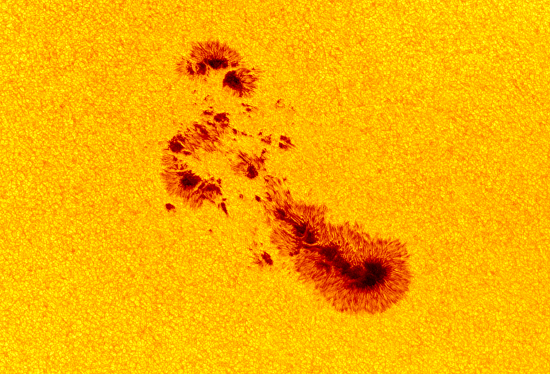October 12, 2020
Sunspots are mysterious.
According to a recent press release, heliophysicists are studying sunspots fields in order to understand how similar phenomena might occur on other stars. Beginning with data from the Solar Dynamics Observatory and the Hinode mission, scientists “smeared” the datapoints into broad images. This gave them a time-based spectrum of the Sun as sunspots pass over its surface. Those “light curves” are thought to give them an idea of what a distant star might look like as sunspots move across its face.
However, something that is known is that electromagnetism is involved with sunspot activity, because loops and whorls of plasma can often be seen connecting them. Filaments and “fibrils” can be detected with high resolution photographic equipment in the penumbra, or darkened cores of sunspots.
Sunspot penumbrae are puzzling to mainstream astrophysicists. Conventional solar models do not predict them. The Electric Universe model does predict them, and they can be analyzed with electric theory.
Electric discharges (sunspots) often appear as long twisting filaments, or funnels, of glowing plasma, whose centers are dark, as if looking down a deep tunnel into the Sun. They also have a helical structure that maintains a fairly constant diameter over great distances. They resemble glowing tornadoes. That phenomenon is known as a “charge sheath vortex”. Rapidly rotating charged particles generate strong electric and magnetic fields, which are concentrated in a thin “double layer” at the periphery of the spot, while motion is stretched out into a spiral. If the vortex has enough energy, it will glow and the edges will be bright.
This is one example where understanding the difference between hot gas and plasma could provide some illumination: sunspots are not the result of gas convection modified by magnetism—sunspots are electrical structures.
In an Electric Universe, the sunspot cycle is most likely a result of fluctuations in the Sun’s power supply from the Milky Way. As the varying current density and magnetic fields of huge Birkeland current filaments slowly rotate past our solar system, they apply more or less power to the electrical circuit that lights up our daytime sky. Rather than a weak Sun, the lack of sunspots is most likely due to a weaker current flow through the galaxy.
Stephen Smith













